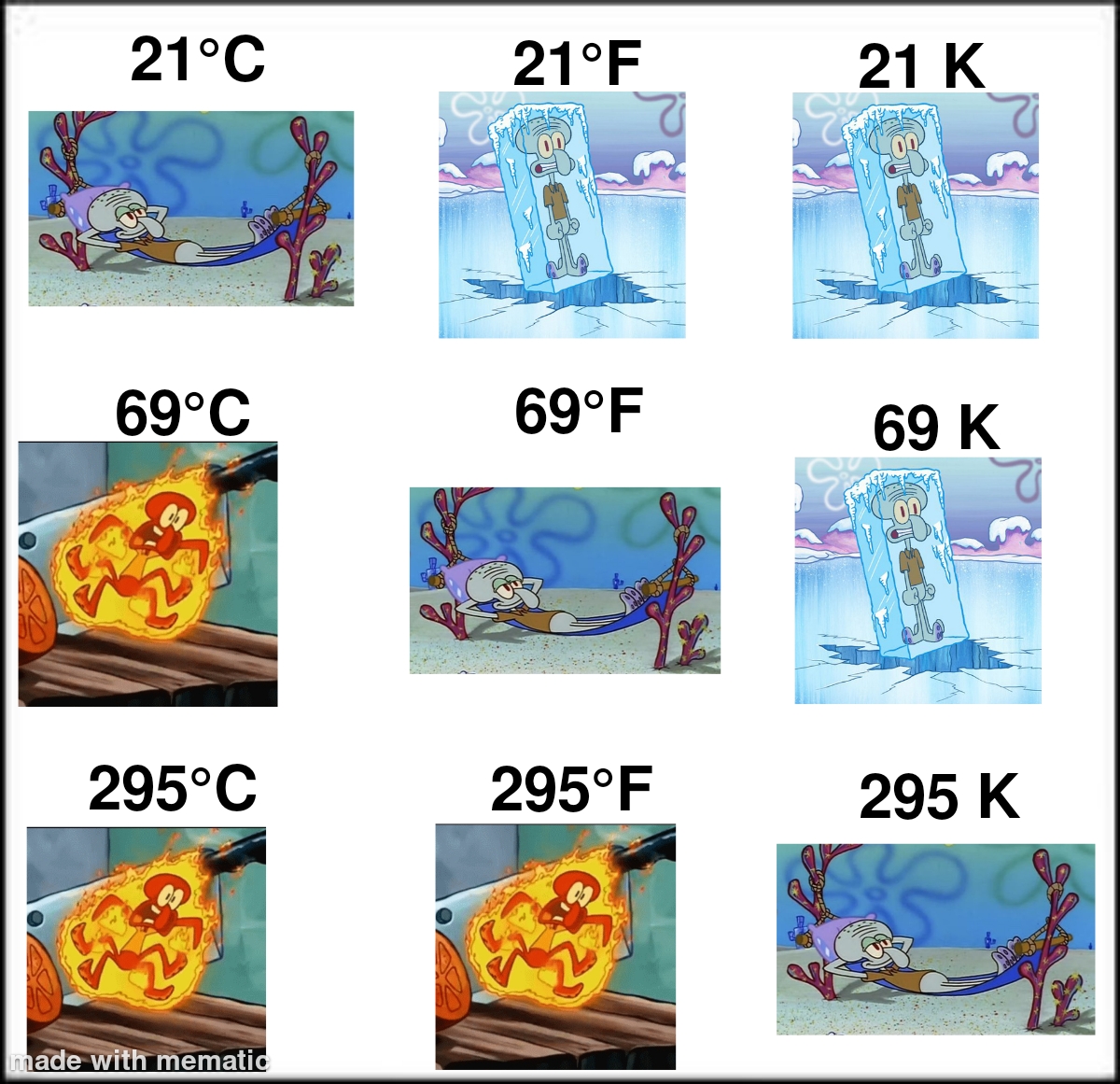this post was submitted on 16 Oct 2024
613 points (96.4% liked)
Science Memes
12092 readers
1740 users here now
Welcome to c/science_memes @ Mander.xyz!
A place for majestic STEMLORD peacocking, as well as memes about the realities of working in a lab.

Rules
- Don't throw mud. Behave like an intellectual and remember the human.
- Keep it rooted (on topic).
- No spam.
- Infographics welcome, get schooled.
This is a science community. We use the Dawkins definition of meme.
Research Committee
Other Mander Communities
Science and Research
Biology and Life Sciences
- [email protected]
- [email protected]
- [email protected]
- [email protected]
- [email protected]
- [email protected]
- [email protected]
- [email protected]
- [email protected]
- [email protected]
- [email protected]
- [email protected]
- [email protected]
- [email protected]
- [email protected]
- [email protected]
- [email protected]
- [email protected]
- [email protected]
- [email protected]
- [email protected]
- [email protected]
- [email protected]
- [email protected]
- !reptiles and [email protected]
Physical Sciences
- [email protected]
- [email protected]
- [email protected]
- [email protected]
- [email protected]
- [email protected]
- [email protected]
- [email protected]
- [email protected]
Humanities and Social Sciences
Practical and Applied Sciences
- !exercise-and [email protected]
- [email protected]
- !self [email protected]
- [email protected]
- [email protected]
- [email protected]
Memes
Miscellaneous
founded 2 years ago
MODERATORS
you are viewing a single comment's thread
view the rest of the comments
view the rest of the comments

21k and 69k are so cold that time would dialate significantly at those temps
This has me confused.
Temperature can be used to refer to how fast the atoms are jiggling (kinetic or phonon temperature) or to how messy, disordered (opposite of ordered) a system is.
Time dilation is a relativistic effect where time appears to go slower when you are looking at something that has a very high speed (near light speed) compared to you (relative velocity). Can also happen with mass because gravity is acceleration, thus related to velocity.
If the atoms are jiggling slower, relative velocities only shrink, so you'd expect to see less relativistic effect. I am not aware of any relativistic effects due to thermal motion in normal conditions (room temp, atmospheric pressure), so I don't know how they'd appear when relative velocities only decrease.
I am really interested where you got this temperature - time dilation link from. Can't seem to crack it.
Yeah their comment doesn't seem right to me. After a bit of googling I found this answer talking about heating things up to see relativistic effects, however because the velocities of the atoms in an object that has been heated up are random it's most likely not possible to detect any relativistic effects. https://physics.stackexchange.com/questions/351773/is-there-a-relation-between-fluctuations-temperature-and-time-dilation
I was taught that any energy exerts stress on space-time and because of that removing energy, lowering temperture, causes dialations.
Where were you taught this? It's pretty much incorrect.
It is true that particles at higher temperatures have higher kinetic energies. But their velocities are so far away from light speed (usually) that relativistic effects like time dilation are entirely irrelevant.
For reference, the surface of Pluto is about 40K. Some of the other dwarf planets a little further out are in the 21K range. Liquid hydrogen (used in many rockets) is 20K.
69K is slightly warmed than liquid nitrogen (63K), and that is incredibly commonly used all over the world. And warmer than Pluto ;)
College physics course near two decades ago now, only about a quarter semester on reletivity though, it was mostly an extension of the first years physics courses.
It'd be interesting to try to figure out if you were taught wrong, or remember wrong. Memories tend to drift over time, but it's possible your college did you a disservice and taught you wrong... Not important. Nevertheless, I hope you're having a great day someplace that is either 21, 69, or 295 ;)
A lot of people definitely taught me wrong, I am American after all. But point taken I was taught the fickleness of memory elsewhere so Im with you there. Could be a bit of both too where I may have heard sometime right and infered something wrong from it. All I remember vividly is heeding my Phys major buddies advice to not stick around for the double pendulum equations.
k is the thousands multiplier. Kelvins are symbolised as K
So twenty thousand kelvins would be 20kK